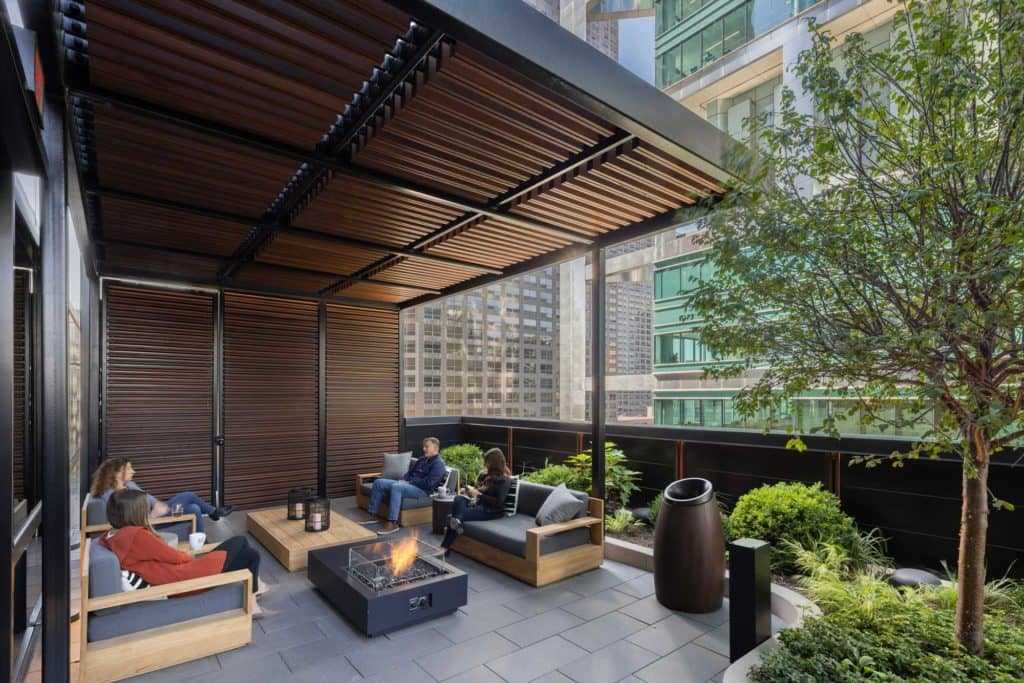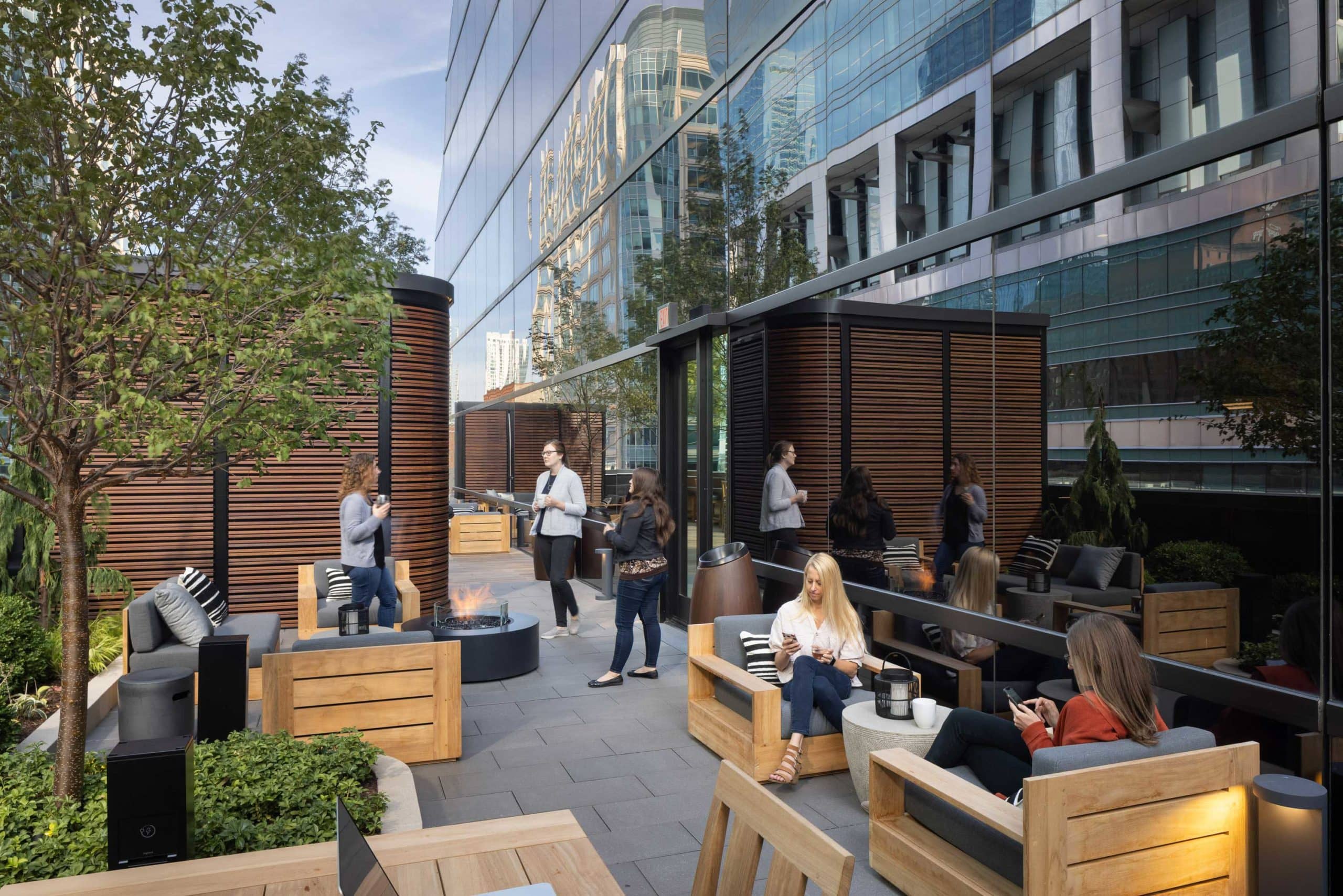The once-in-a-generation shift that’s taken place over the last three years will undoubtedly have a lasting effect on the dynamics and landscape of modern work, particularly for companies that once considered the office to be the nucleus of an organization. COVID-19, the catalyst for normalization of work from home, and the Great Resignation, have permanently affected workplace preferences. Office-space and design trends — such as the utilization of hybrid and flex space — are in constant flux as we try to decipher what will be the most advantageous strategy for employees and companies going forward.
Demand for flex space saw a major rebound after it cratered during the height of COVID because it was primarily used by small companies or startups that needed temporary space for things like client meetings. Once the lockdown was declared, that use virtually disappeared. However, while coming out of lockdown, larger companies began to see flex space as part of their “spoke-and-hub” hybrid approach, using it as satellite office space to minimize commuting distance for employees who wanted an office atmosphere but didn’t want to spend hours a day trying to get there.
One of the interesting results of all this upheaval is that there is now a hot market for developing the most innovative CRE office concepts. In some instances, offices have been converted into spaces with couches and other comfortable furniture where workers can have privacy for work, phone conversations or web meetings without disturbing those around them. Offices have also been combined to create teamwork areas of varying sizes. Reimagining the work dynamic came first, but redesigning for the future will be an ongoing evolution.

In a CBRE podcast about Reimagining the Office, a professor at the University of Chicago, calls what we’re seeing “The Big Shift” or “an evolution from the idea of office as a defined workplace into dynamic forms of working arrangements.”
Companies that want more employees in the office need to reenergize their spaces and amenities, so employees will feel the commute is worth their time, expense and stress. Enter the purpose-led workplace. Many employees have reported they are battling feelings of isolation and disconnection, so there is a contingent that would welcome going back at least some days.
According to JLL, 36 percent of employees felt an energy drain while working and a quarter of them felt so exhausted by work and home life that they couldn’t take care of their health and wellbeing. It’s difficult to deny the value of positive energy in the workplace and how it can charge employee motivation, engagement, and contentment, which directly influences creativity and productivity. Companies that focus on providing these things are far more likely to be rewarded with high retention levels, which is crucial to the bottom line, especially in the current job market.
Employee turnover costs U.S. businesses in excess of $1 trillion a year, and with unemployment low, companies need to leverage strong leadership and the latest regenerative, purpose-led design strategies to retain their current employees and ensure they are engaged and productive.
To illustrate how significant a priority employee health and well-being has become, a JLL survey showed that professionals are now citing a positive workplace experience and enjoying life outside the office as a higher priority than salary, which has historically been the top of the employee “want” list.
When asked in another JLL survey to rank the top three amenities that could improve their well-being at work, employees most frequently said they wanted relaxation spaces (45%), healthy food services (44%) and outdoor spaces (41%). Ways companies can achieve this is through outdoor and green areas, relaxation pods, supplied food and beverages, and opportunities for socializing.

In addition to health and well-being, the focus on Environmental, Social and Governance (ESG) is helping drive the move to the purpose-led workplace.
So, what is the criteria for a purpose-led workplace? According to HDR, Inc., an engineering, design and architecture firm, the purpose-led approach need not be thought of as just doing “less harm” but doing good. New construction and building design must have the capacity to evolve and provide positive impact to the occupants as well as to the surrounding land and environment.
Regenerative, purpose-led design should center on these pillars:
- It achieves net-positive impacts for the environment, wellness and society
- It is flexible and applicable to wide-ranging project types and sizes
- It is metric-based and should exceed regulatory standards
- It evolves and renews
- It builds upon existing green and wellness standards
Renovations can be minor — reconfiguring work areas as previously described — or major, such as KBS’ focus on environmentally responsible offices. Companies prioritizing the physical, mental and emotional wellness of their employees and using the tenets of ESG as a foundation, are far more likely to attract younger talent and retain their existing workforce — as people feel valued and respect the values of their employers.
Learn more about commercial real estate, visit KBS.com/Insights.




